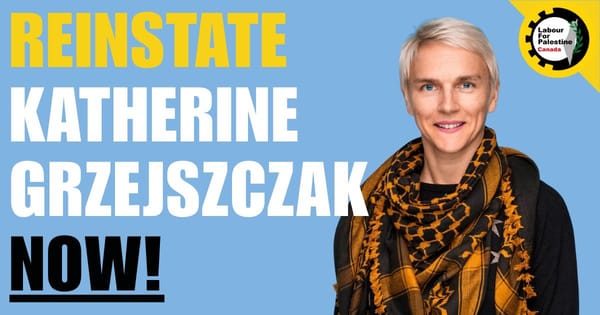
Remember during the 2016 Democratic Primary when Hillary Clinton ineptly said she was “going to put a lot of coal miners […] out of business”? The Bernie crowd — myself included — had a good time with this gaffe, finding in it a microcosm of a certain centrist Democratic politics that touts supposedly progressive policy (in this case, clean energy) while treating the needs of working people as an afterthought, at best.
It struck me last week that embedded in this humorous episode in the short arc of the recent left-wing upsurge in the United States was also a deeper problem with the way we frame issues related to climate justice and jobs.
In my estimation, thus far the left has largely framed climate change’s impact on labour as a matter of the quantity of jobs. Against the argument that environmental regulations and climate-oriented policies are job killers, democratic socialists have tried to craft an approach that protects and creates “green jobs” in low-carbon areas of the economy, such as renewable energy and the care sectors.
A “green jobs” approach is a huge aspect of what the American Green New Deal attempts to do, as did its predecessor, the Leap Manifesto, here in Canada, as well as the Green Industrial Revolution put forward by the United Kingdom Labour Party under Jeremy Corbyn’s leadership. In all three cases, the objective is to utilize climate justice legislation to simultaneously address jobs and other economic issues.
Without question, it’s vital to push back against a public discourse that pits climate policy and job growth against each other. We do need to create a lot of public sector jobs to meet the demands of a warming world. Yet, the emphasis on job quantity can at times obscure the ways the immediate effects of climate change impact job quality for many workers.
Moreover, this isn’t a problem we will confront only at some point in the future. For a growing number of workers, rising temperatures are a workplace health and safety issue right now. Workers need the ability and power to protect themselves from the impacts of climate change at work.
The recent extreme heat wave in the Pacific Northwest of Canada and the U.S. offers a glaring, real world example of what’s at stake when it comes to rising temperatures and work. Extreme heat in many workplaces in British Columbia, Washington state and Oregon put the issues of climate change and working conditions on full display.
The negative impacts of climate change at work are of course unevenly distributed. Many in offices or other indoor, climate-controlled environments might largely avoid extreme heat, but for growing numbers of workers in industrial, retail, or outdoor workplaces, exposure to heat is a serious workplace safety issue.
Airline crews, warehouse workers and lifeguards in Washington and Oregon all experienced work interruptions or illness due to the extremely hot weather in the past couple weeks. Fast-food workers affiliated with the Fight for $15 in Sacramento, California walked off the job in protest of excessive heat and lack of air conditioning. Workers at Voodoo Doughnut in Portland, Oregon — who recently lost a union certification vote by a narrow margin — also ceased work on “the hottest day in Oregon history.”
Agricultural and construction workers are perhaps the most impacted outdoor workers. Both industries increasingly rely on temporary migrant and new immigrant workers to fill low-wage and non-union jobs. According to a survey by the United Farm Workers Foundation, as of June 30 more than half of farmworkers in Washington reported experiencing symptoms related to heat illness.
On June 26, a farmworker in Oregon died of heat stress. As Mindy Isser — drawing on data from the Centers for Disease Control and Prevention — pointed out at In These Times, as far back as 2008 (the last available numbers) “farmworkers already were perishing from heat at a rate of 20 times other civilian workers.”
It’s not only those in low-wage, precarious work who are feeling the brunt of excessive temperatures. Austerity in the public sector also puts these issues front and centre.
During the COVID-19 pandemic, the age of many elementary and high schools throughout Canada received renewed public attention due to their often poor ventilation. However, for years many teachers and their students had been suffering with excessively hot classrooms in the final months of each school year. As of 2017, for example, only about 125 of the 584 schools in the Toronto District School Board were fully air-conditioned.
Across the private and public sectors, workers are left trying to manage the impacts of climate change at work, on top of their other workplace duties.
What about health and safety standards and legislative protections?
In the U.S., the right to refuse unsafe work under the federal Occupational Safety and Health Act can include extreme weather, but what constitutes ‘too hot’ is murky. Despite recommendations going back to the organization’s creation in the 1970s, the Occupational Safety and Health Administration (OSHA) has not issued any specific standard dealing with excessive heat at work.
Instead, OSHA relies on something called the “general duty clause,” which requires employers to provide a workplace free from “recognized hazards” likely to cause death or illness. The vague nature of this clause can lead to workers being fired for refusing what they perceive to be unsafe work, and then having to contest their dismissal after the fact — a timely and costly process many workers can’t afford. The lack of a clear standard and protection from reprisal also has a chilling effect on workers’ likelihood of speaking out against unsafe work.
In Canada, provincial safety and health laws also give workers the right to refuse unsafe work. However, as I wrote in May, how health and safety laws guard against extreme temperatures at work varies across the country, like all labour laws and regulations. In some provincial jurisdictions, the standards protecting workers from extreme temperature at work are fairly strong; in others there are only general guidelines with little to no corresponding enforcement mechanisms.
For example, British Columbia, Manitoba and the Atlantic provinces use an international regulatory standard known as “Threshold Limit Values,” which sets an appropriate temperature for worksites. Other provinces use this only as a non-enforced “guideline” and rely on a “general duty clause” like OSHA in the U.S. In Alberta, vague provincial guidelines provide very little protection. In Ontario — usually distinct for its more complicated labour regulations — specific temperature rules address different industries and sectors.
Yet many of these particular standards deal with types of workplaces (e.g. mining, construction, manufacturing) where, historically, regulating temperature was important — workers in the service economy increasingly affected by extreme heat remain less protected.
Additionally, as with all labour standards, we know that in practice exercising a right is about the power to do so, without the fear of employer reprisal. Refusing to work in extreme heat — even if the law is formally behind you — is difficult for workers without union representation, particularly those working in precarious situations.
This is why it’s vitally important that unions and other worker advocates take up the fight to protect workers from climate change’s immediate effects on working conditions.
As Isser recounts, some unions in the U.S. have begun to fight for temperature standards. The Communication Workers of America did so after a worker died in 2011 after installing phone services in 100 degree heat. Political campaign and nonprofit staff represented by the International Union of Painters and Allied Trades bargained heat and smoke standards in their most recent contract, responding to summers of rising heat and excessive smoke due to wildfires in the west.
As climate change continues to push temperatures higher in the coming years, workers and their unions will need to fight for the ability to collectively bargain over temperature standards. For those without union representation, ensuring that the “right to refuse” unsafe work is accessible and that workers are adequately protected from employer retaliation when they do exercise this right will be key.
We can’t only fight for more “green jobs” in our climate justice legislation; we also have to find ways to address the working conditions of the jobs currently impacted by rising temperatures and climate change.







